vol.
016
MARCH
2017
vol.016 / Roundtable
The expanding scope of our physical sensations
Yoshiyuki Miyamae (Designer) × Hisato Ogata (Design Engineer)
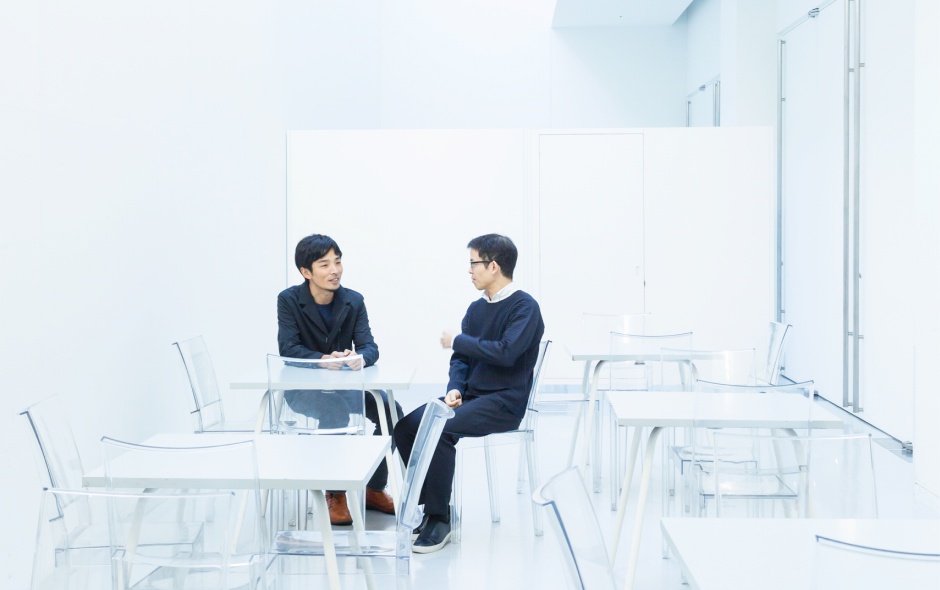
The unconscious body
Miyamae: The Athlete exhibit is about to open at 21_21 Design Sight (*1). You’re one of the directors, right?
Ogata: Dai Tamesue, Syun’ichi Suge, and I are directing it together. In total contrast to Tamesue, who was a top athlete, Suge and I are the type of people who cheer on the Olympics via our TVs and go watch our favorite team play now and then. So when I was first approached about directing Athlete, I imagined athletes as inhabiting this superhuman world completely separate from me. What could I contribute in relation to that world? But when I started talking with Tamesue and other athletes, I realized we did have some connections after all. Ordinary people like me have a bit of the athlete’s spirit in us, and for their part athletes inhabit the same everyday world as us. When I saw how all these elements were entwined, I felt like we’d be able to create an exhibit that would give athletes and non-athletes alike new perspectives.
Miyamae: I’m looking forward to seeing how it turns out.
Ogata: To what extent are athletes able to move their bodies in the ways that they consciously planned to move in? By training extensively, they are able to turn movements that they have consciously deconstructed into unconscious movement. We, too, are able to walk or run or grasp something without consciously directing our actions. I think what visitors to the Athlete exhibit will be able to understand is the sophisticated physicality involved in those simple acts of walking, running, or grasping.
Miyamae: When I was working on the costumes for Jo Kanamori’s dance company Noism (*2), I really thought a lot about this question of how consciousness and unconsciousness are related in our bodies. Like athletes, dancers train rigorously on a daily basis. By practicing the choreography repeatedly, these gorgeous, energetic physical movements emerge. So within that context, what is the role of clothing? Of course they serve as one way of telling a story on the stage, but what I handed over to Kanamori were constraints.
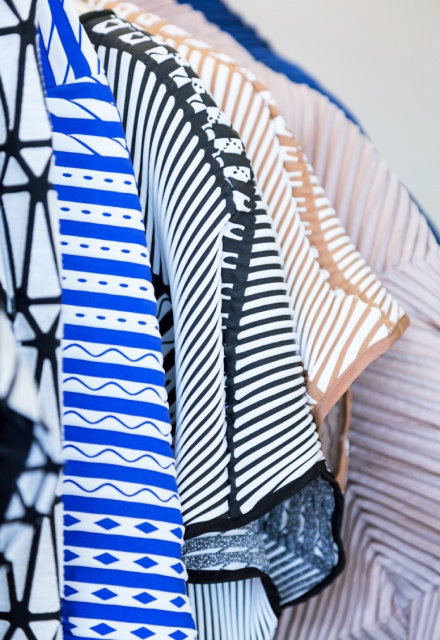
Ogata: Constraints in the clothing?
Miyamae: I took the essential premise that said the clothes should be easy to dance in and purposely added a meter of cloth to the sleeves in order to put a constraint on movement. As a result, whenever the dancers moved their arms, the cloth would follow with a delay of a step or two, and if their arm movements lagged, the cloth would droop there not looking beautiful anymore. That made the dancers extremely uncomfortable, and they would inevitably direct their attention to their arms and move them so that the cloth swirled around beautifully.
Ogata: Their bodies were being pulled by the cloth. The feedback itself became a new physical sensation. That’s really interesting.
Miyamae: Something different from their original physical self is created. In other words, the clothing served to expand their bodies. When that happened, I felt for the first time that our clothes and the bodies in Noism could become unified. Of course I was only able to turn toward this theme of constraints thanks to Noism’s physicality.
Swinging like a pendulum
Ogata: In the course of doing research for Athlete, I learned that there’s this phenomenon where if a world record improves, the records of athletes overall also improve. The point is that in the era when people couldn’t break 10 seconds in the 100-meter dash, they were assuming that a human being absolutely could not run it in less. But the instant someone broke through that wall everyone else started breaking through, too.
Miyamae: Human beings will just keep evolving, right? I hope we see more athletes breaking through walls at the Tokyo Olympics three years from now. Speaking of Tokyo, and since Tokyo is one of our themes in this conversation for the Tokyo Paper for Culture, I have to say that this is such a diverse city, where for instance the people and the shops are totally different in Shibuya versus Shimokitazawa. My image of it is this diverse patchwork of all different things.
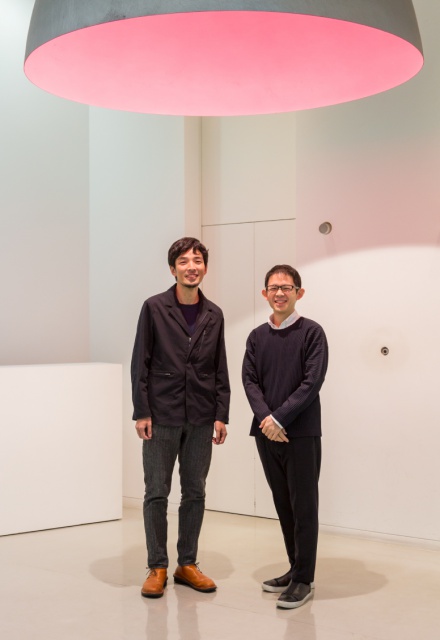
Ogata: The Chuo Line has a totally different atmosphere from the Tokyu Toyoko Line, and that’s true for the districts alongside each railroad line. On top of that you have the Yamanote Line, which is a ring, and the result is this really interesting city. I feel like the urban culture is shaped by this sense of there being no beginning or end.
Miyamae: At the same time, I have the sense that as urban development continues on the principle of prioritizing the economy before all else, we’re moving more and more toward a Tokyo where you can cut out any one piece and it will look the same as any other. That makes me sad.
Ogata: Even so, if Tokyo’s character still lies in its diversity, I think it would be great to have tourism materials that show people how to enjoy the city from different perspectives. For instance, during the 2012 London Olympics, Time Out was in charge of creating an official travel guide for the city, and they produced Open London, which included comprehensive accessibility information on everything from the airport to the city neighborhoods. Guidebooks that incorporate multiple perspectives, including those of the disabled and the elderly, enhance mutual understanding. There’s a movement to create something similar for Tokyo in 2020, and I think we should be trying to gain a deeper understanding Tokyo from those perspectives.
Miyamae: Design and engineering are also about creating connections – connecting people and things, connecting old skills to a new era. Personally, I am hoping to continue this work of connecting here in Tokyo.
Ogata: So am I. And to keep on swinging like a pendulum.
-
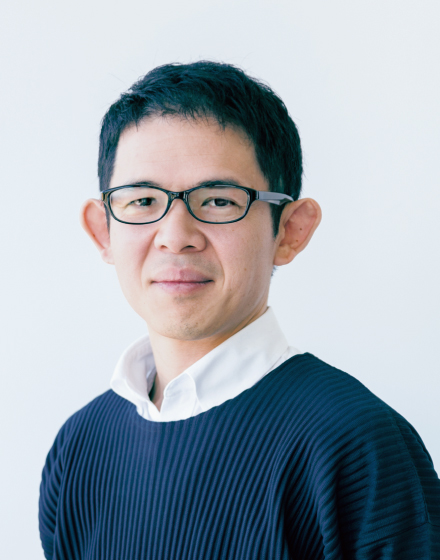
Yoshiyuki Miyamae
Yoshiyuki Miyamae was born in 1976 in Tokyo. He graduated from the Creative Apparel Design program at Bunka Fashion College in 1998. In 2001 he joined MIYAKE DESIGN STUDIO and became part of the A-POC project team. In 2006 he joined the ISSEY MIYAKE design team, and in 2011 he was named a designer of the brand and debuted in its Paris collection. He designs clothes that illuminate both the traditional craftsmanship and the innovative product development that define the ISSEY MIYAKE brand.
www.isseymiyake.com/en -
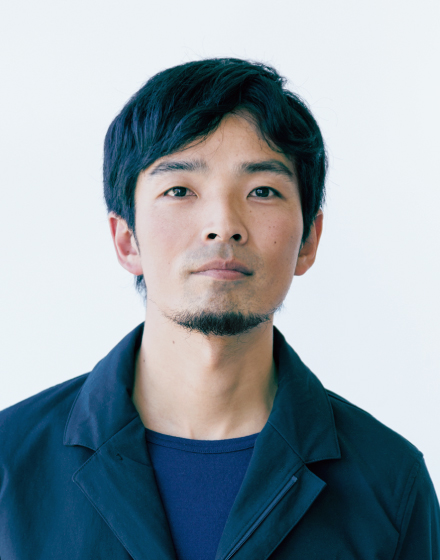
Hisato Ogata
Hisato Ogata was born in 1977 in Kumamoto. After attending the Institute of Advanced Media Arts and Sciences in Gifu Prefecture and working with Leading Edge Design, he joined takram in 2012. His work on both hard and soft projects crosses the boundaries of design, engineering, art, and science. He is currently serving as director of the Athlete exhibit at 21_21 Design Sight (through June 4, 2017).
www.takram.com
Editing & Written by Nanae Mizushima
Photography: Manami Takahashi
Translation: Office Miyazaki, Inc.



